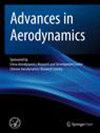Mass transfer analyses of reactive boundary schemes for lattice Boltzmann method with staircase approximation
IF 2.3
3区 工程技术
Q2 ENGINEERING, MECHANICAL
引用次数: 0
Abstract
Lattice Boltzmann (LB) methods with reactive boundary conditions are widely used in pore-scale simulations of dissolution and ablation processes. The staircase approximation of curved boundary is often employed because of its simplicity in handling solid structure changes. In this work, the mass transfer of two typical LB reactive boundary schemes are analyzed for the staircase boundary. The Type I boundary scheme is based on relations of local distribution functions and a wet-node boundary mesh. The Type II boundary scheme adopts the half-way bounce-back scheme. Boundary concentrations are determined by finite difference, and a link-wise boundary mesh is used. The analyses demonstrate that for straight boundaries, both the boundary schemes have accurate mass transfer rates, which means the mass transfer calculated by exchanges of distribution functions is the same as that calculated by reaction rates. For curved boundaries with staircase approximation, including interfacial normal directions in the Type I boundary scheme can provide accurate mass transfer for inclined straight boundaries. However, if the staircase boundary geometry is used directly without normal directions, the reaction rate will be overestimated. One-dimensional and two-dimensional reaction-diffusion processes with dissolution are simulated to validate the analyses. Both the boundary schemes work well for one-dimensional simulations. For two-dimensional simulations, the Type II boundary scheme significantly overestimates the reaction rate, and stronger artificial anisotropic effects are observed. The Type I boundary scheme with normal directions has better performance, but error still exists.采用阶梯近似的晶格玻尔兹曼法反应边界方案的传质分析
具有反应边界条件的晶格玻尔兹曼(LB)方法广泛应用于溶解和烧蚀过程的孔隙尺度模拟。由于曲线边界的阶梯近似在处理固体结构变化时比较简单,因此经常被采用。本文分析了两种典型的阶梯边界 LB 反应边界方案的传质情况。I 型边界方案基于局部分布函数关系和湿节点边界网格。第二类边界方案采用半程反弹方案。边界浓度由有限差分确定,并采用链接式边界网格。分析表明,对于直线边界,两种边界方案都有精确的传质速率,即通过交换分布函数计算的传质与通过反应速率计算的传质相同。对于采用阶梯近似的弯曲边界,在 I 型边界方案中包含界面法线方向可以为倾斜的直线边界提供精确的传质。但是,如果直接使用阶梯边界几何形状而不包含法线方向,则会高估反应速率。为了验证分析结果,我们模拟了一维和二维的反应-扩散过程。在一维模拟中,两种边界方案都运行良好。对于二维模拟,第二类边界方案明显高估了反应速率,而且观察到更强的人为各向异性效应。带有法线方向的 I 型边界方案性能更好,但误差仍然存在。
本文章由计算机程序翻译,如有差异,请以英文原文为准。
求助全文
约1分钟内获得全文
求助全文

 求助内容:
求助内容: 应助结果提醒方式:
应助结果提醒方式:


